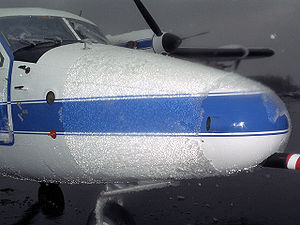 In November, the Federal Aviation Administration issued an updated rule to broaden the requirements of icing certification standards.
In November, the Federal Aviation Administration issued an updated rule to broaden the requirements of icing certification standards.
Beginning in January 2015, US manufacturers of certain new transport category aircraft will need to demonstrate safe operation in freezing drizzle and rain, a specific icing environment known as “supercooled large drops” (SLD), as well as ice crystal weather conditions, which can clog external air data sensors and cause a build-up of ice in an engine.
Additional icing certification requirements are mandated “for engines, engine installations, and some airplane systems on all transport airplanes, such as angle of attack and airspeed indicating systems. These systems must be able to perform in freezing rain, freezing drizzle, mixed phase, and ice crystal conditions.”
The FAA estimates industry costs of $61 million to airplane manufacturers, engine manufacturers, and operators of affected equipment, while the benefits are estimated at $583 million.
Hydra-Electric’s innovative sensing technologies have been put to the test in a multitude of applications that are subject to extreme conditions. As industry standards evolve, the Company continually strives to ensure its high performance sensors and switches meet customer requirements across a wide variety of aerospace applications. As a recent example, a major airframe manufacturer presented Hydra-Electric with the challenge of designing a pressure switch that could meet the rigorous requirement of monitoring three essential criteria simultaneously under severe conditions, including extreme icing. See our case study on Extreme Icing.


